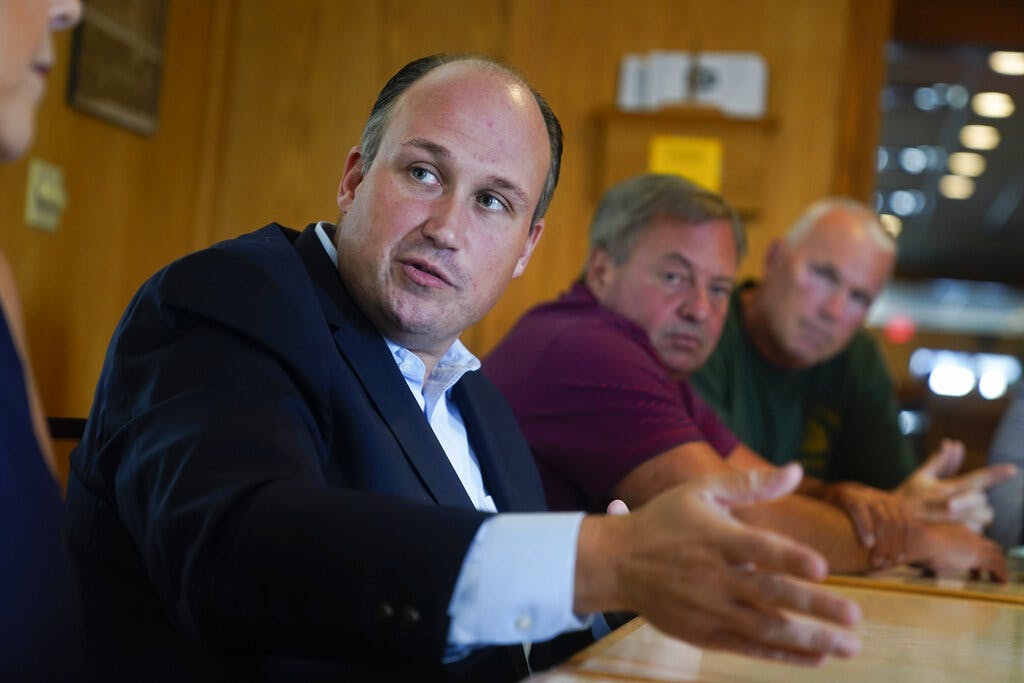A Bigger Tent Could Help New York Republicans Build on Midterm Gains
Independent voters outnumber the GOP in the Empire State, so opening primaries would help steer the party toward more electable candidates.

At first glance, this would seem to be a heady time for New York State Republicans, after midterm election gains and a close gubernatorial race. Yet a close look at midterm gains reveals a Party still in trouble — and in need of a dramatic change of course, including a new way to choose its candidates.
There was good midterm news for the GOP, to be sure. By flipping four House seats — including that of the Democratic Congressional campaign chairman, Sean Maloney — New York Republicans played a crucial role in helping their party win the House.
Representative Lee Zeldin came breathtakingly close to defeating the incumbent, Governor Hochul — and his coattails outside New York City undoubtedly helped the Upstate and Long Island red wave.
But a closer look tempers cause for Republican celebration. The Party fell short in its key goal of electing enough State Senate and Assembly members to deny Ms. Hochul and Democrats a veto-proof majority. (A 27-vote defeat at Syracuse looks to be the difference.)
It was billionaire Ronald Lauder, not the state party, whose funds financed the crucial lawsuit leading to the redrawing of Congressional districts after an Albany gerrymander.
New York Republicans mostly fail to involve the Manhattan billionaires who willingly finance Presidential candidates. It’s easy to see why: the Party website promotes its outgoing chairman but lacks a formal policy platform.
Reviving the New York Republicans and building on their Congressional gains will call for all the traditional tools of party-building. Consolidating the favor of the Asian vote which has moved their way in the wake of non-merit-based school admission policies. Finding a state chairman with charisma. Cultivating Manhattan money.
But pitching a big political tent calls for a radical step: changing its primary election rules to allow independent voters to have a voice in choosing candidates.
As it stands, both major parties in New York run “closed” primaries: only voters registered in their parties can vote.
But there are more so-called “blank”or formally independent voters in the state, 2.9 million, than Republicans, with 2.7 million, and these voters are pushed to the sidelines.
An obscure 2003 federal court ruling overturned a state law requiring closed party primaries. (The Ross Perot-inspired Independence Party brought the suit.) Since then, neither major party has moved to open its primary—but this would be the right time for Republicans to do so.
Inviting independent voters to help choose Republican nominees would help broaden the Party’s appeal by tempering its extremes.
One can only wonder whether the former Westchester county executive, Rob Astorino, more centrist than Mr. Zeldin but defeated in the GOP primary, might have prevailed over Ms. Hochul. He did well in 2014 against a then-strong Andrew Cuomo.
An open primary at New York City, where there are twice as many independent voters as registered Republicans, could be especially impactful.
An open primary would make it possible for the GOP to nominate a non-fringe candidate — in contrast to the hopeless recent candidacy of the Guardian Angels founder, Curtis Sliwa.
A larger primary electorate, too, would provide a way for more voters to feel invested in the process. That’s good for democracy — and would serve as a sharp contrast to the Democrats who purport to protect it but keep their primary closed.
Two New England states have already demonstrated the successful electoral formula for Republicans in blue states: social liberalism and fiscal conservatism.
Governor Baker of Massachusetts, among the most popular chief executives in the country, held the line on taxes and rent control and championed charter schools, while denouncing Trumpism.
A Vermont Republican, Phil Scott, has just won his fourth term as Governor. Voters see him as tempering a deep blue legislature and he’s pushed back against minimum wage and payroll tax increases.
There are 2.9 million “unenrolled” voters in Massachusetts but only 437,000 Republicans. A hard right Republican in that state just lost the race to succeed Mr. Baker. A Democrat, Maura Healey, replaced him. The popular former Governor had relied on independents to win.
For New York Republicans to follow that path and build on their midterm gains they need a bigger tent. An open primary could provide the means to erect one.

